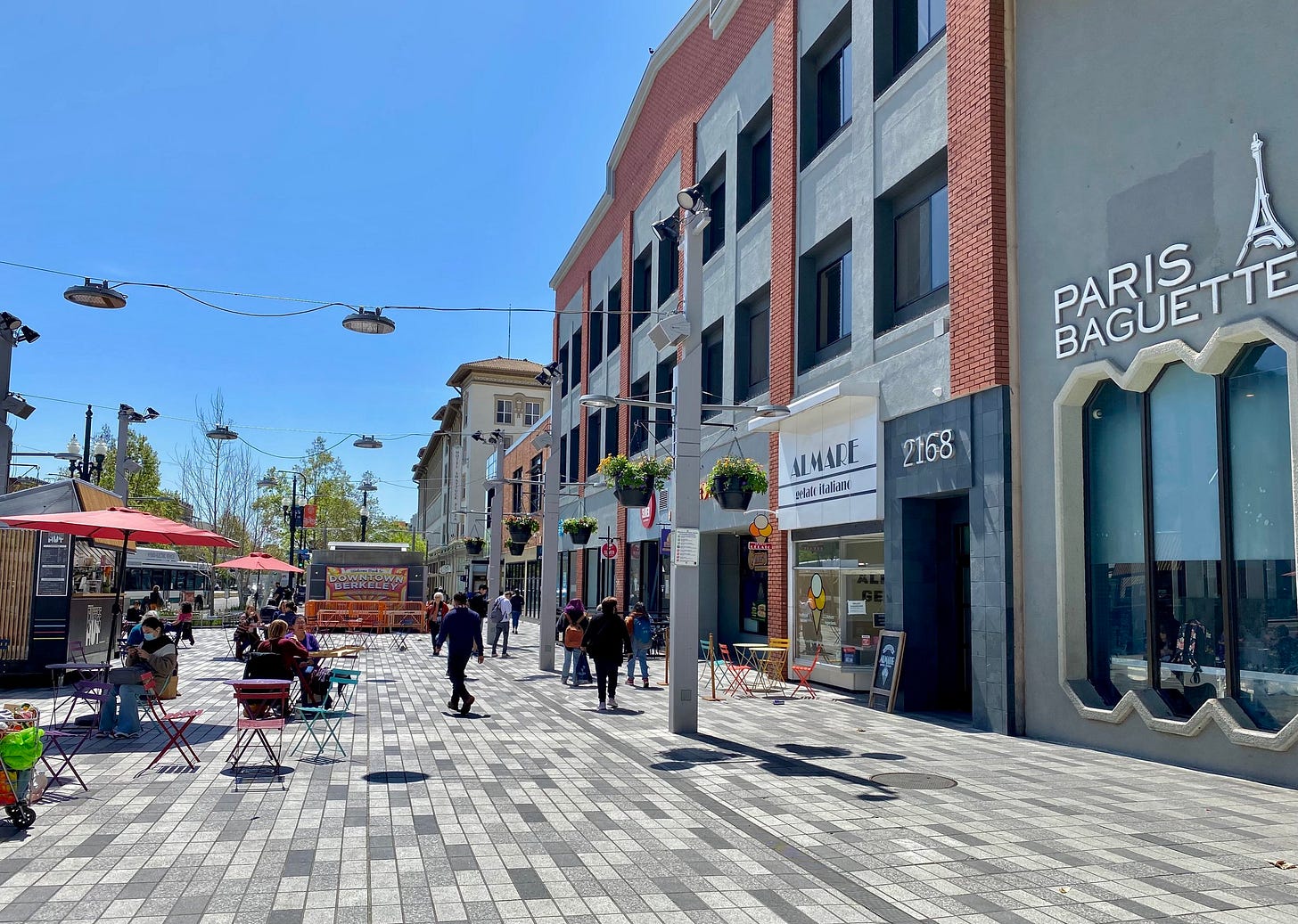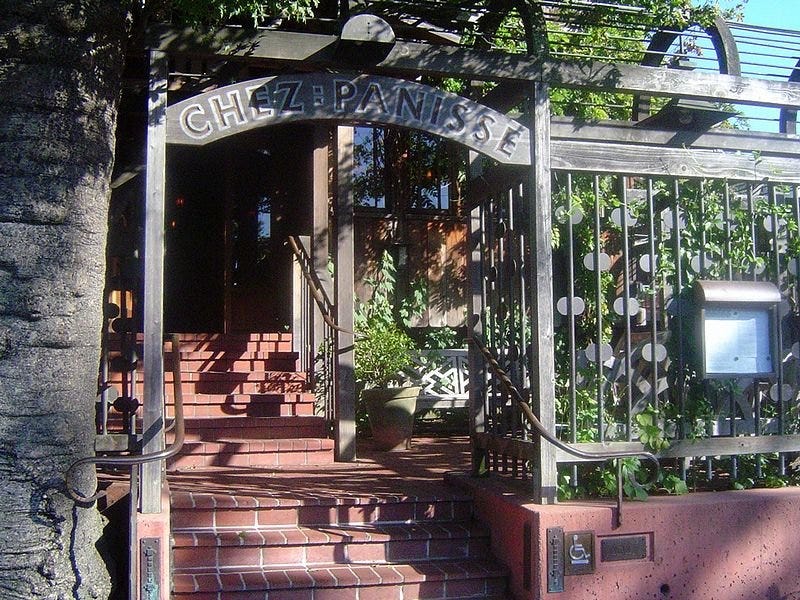5 Things Southern Cities Can Learn From Berkeley
There’s lots to love about the most activist outlier town on the West Coast—and a few less enviable things

My family and I spent the last eight months living Berkeley, California. Like Durham and Chapel Hill, Berkeley is home to lovely weather, vibrant farmers’ markets, and a world-class university. It’s well known as a wonderful place to live. Our area can learn from its successes—and its failures.
Here are five things I learned while living in Berkeley:
1 – Most neighborhoods have a mix of walkable retail and residential
Berkeley is much more dense than Durham, with 11,917 versus 2,605 people per square mile. That sounds like a lot, but don’t imagine New York City. It’s more like the quiet, tree-lined neighborhood of Old West Durham with more homes. One benefit of this extra density is all the great stuff that is within walking distance. There is a café 300 feet from our house. Within a ten minute walk, there are also at least five other cafés, three bakeries, two grocery stores, and numerous restaurants. If Durham allowed more density, these types of amenities would be possible in many neighborhoods here as well.
2 – People have smaller yards and spend more time in public space
How does Berkeley achieve this increased density? One thing that is notable about most Southern cities is how much land homes tend to occupy. In many Durham neighborhoods, the average urban plot of land is often at least 6,000-7,000 square feet. Compare that to my neighborhood in West Berkeley, where plots are closer to 3,000-4,000 square feet. This means people have much smaller yards, in front and back, and houses are closer together. In practice, this leads people to spend much of their time in public parks and cafés like the one that is just across the street from our house. Trust me—this life is not too bad.
3 – Many neighborhoods include a wide variety of housing
Another notable feature of Berkeley is the wide variety of housing types within each neighborhood. Two- to three-story apartment buildings, cottage communities, and retirement homes are interspersed among single-family homes. This allows an array of ages and social classes to enjoy a given neighborhood, and it lets people stay within their neighborhood as they age and downsize. It’s lovely. This type of situation is possible in a few in-town neighborhoods in Durham, but it isn’t as widespread as it should be.
4 – Bikes are a great way to get around the city
I’m not going to lie: One downside of the increased density is increased traffic. The good thing is that Berkeley has heavily invested in making the city accessible by bike. By some measures, it’s a top-five U.S. city to bike in, and you can really feel it. Every morning, I see families riding with their children to school or the park. And this is not Chicago; Berkeley has hills. E-bikes help a lot on this front, and despite being expensive, they are getting more affordable. How does Berkeley achieve this bike-friendly environment? For one thing, they’ve put serious money into protected bike lanes and paths. But most importantly, they have simple hand-painted bike lanes on most streets. This creates a world where people in cars expect people to be on bikes. Many of these changes are not expensive, and they make a city much more livable. I am very much looking forward to coming back to Durham, but if I could bring one thing back with me, it would be Berkeley’s bike infrastructure and culture.
5 – There is incredible NIMBYism that makes living in Berkeley too expensive
So, Berkeley sounds great. Why doesn’t everyone live there? The answer is, they can’t: It’s really expensive. Despite being a fantastic place to live, for years, Berkeley just didn’t build enough housing, often permitting fewer than sixty units per year. As a result, new residents have to fight over existing homes, leading prices to increase. Why is it like this? Similar to Durham, a lot of existing homeowners don’t want more people to move there, arguing that it will irrevocably change Berkeley for the worse. This view was recently taken to its logical endpoint when some longtime homeowners sued UC Berkeley—one of the best public universities in the country and the main reason the city of Berkeley is what it is—to make the university admit 5,000 fewer students each year. Fortunately, the state legislature intervened, but it nearly happened.
To me, Berkeley is a cautionary tale for Durham and other cities in the South. It is a marvelous but incredibly expensive place to live. It is also much less diverse than it could be. The share of African-American residents fell from 23 percent in 1970 to 8 percent in 2020, despite the population staying roughly constant; much of the net migration out of California is from lower- and middle-income households.
To my mind, if we do nothing in Durham, that is where we will be in twenty years. If you don’t believe me, just look at Chapel Hill. In the 1990s, NIMBY-leaning neighbors got control of city council, and building stopped. The end result is that, according to Zillow, the average price of a single family home as of now is over $625,000.
Fortunately, things have finally started to turn around in Berkeley. There is a new city council and a lot of construction has started again, concentrated near public transportation hubs. They are also investing in making the city livable, turning main commercial streets near downtown into pedestrian-only zones. In Durham, we can imagine a world where Main Street and 9th Street are like this. I just hope Durham learns from Berkeley’s mistakes before it’s too late. If we do, I think we can create an even more amazing and inclusive place to live.
David Berger is a Professor of Economics at Duke University. His research interests include Macro/Monetary, Housing, Labor and Finance.


